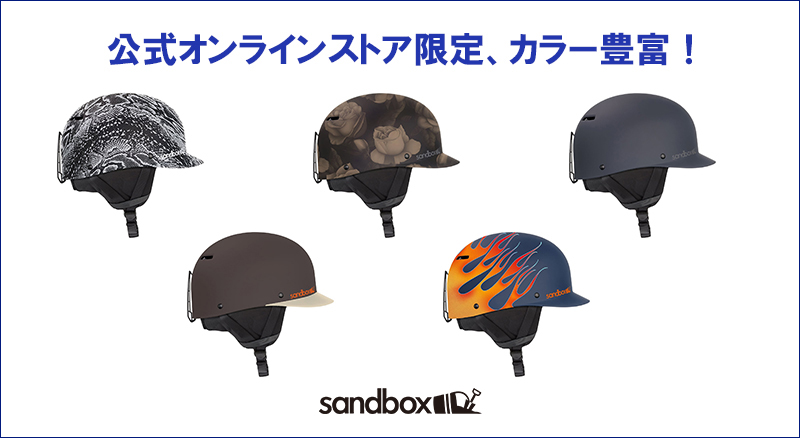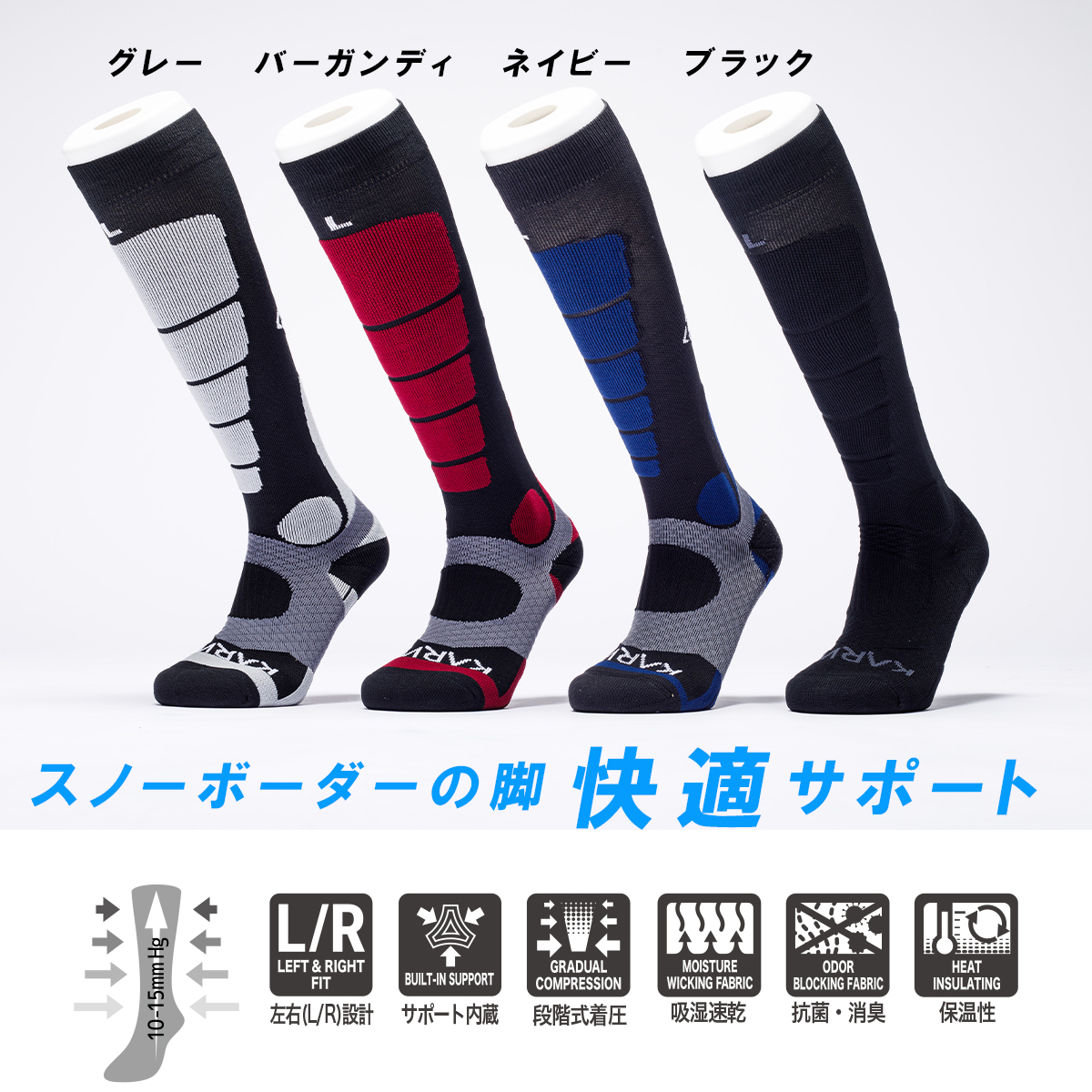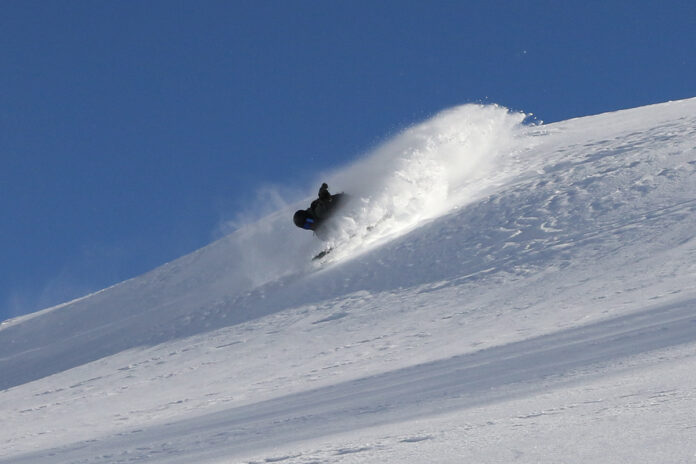
Riding fresh powder is the ultimate dream for many snowboarders—floating effortlessly, carving smooth turns, and experiencing that unbeatable feeling of weightlessness. But if you’re struggling in deep snow or lack confidence, you’re not alone! Mastering powder riding requires the right technique, mindset, and a few key adjustments. In this guide, I’ll share seven essential tips to help you improve your powder snowboarding skills and make the most of every powder day.
Writing this article wouldn’t have been possible if it weren’t for my friend, Sigmund Chan(CASI Level 3 Instructor).
目次
Tip 1: Let’s get back to the stance
People who are not used to powder riding may feel that the board will easily sink. Therefore, let’s move back the stance setting to help the board float. This stance is called setback.
The setback stance will help keep the nose floating above the snow.

If you want to have setback on your snowboard, personally I recommend about 2 cm.
My friend Sig said, “You might even find that your board reference point is already set back. For example, Burton’s Custom board is already set back by 1.25cm(half an inch).
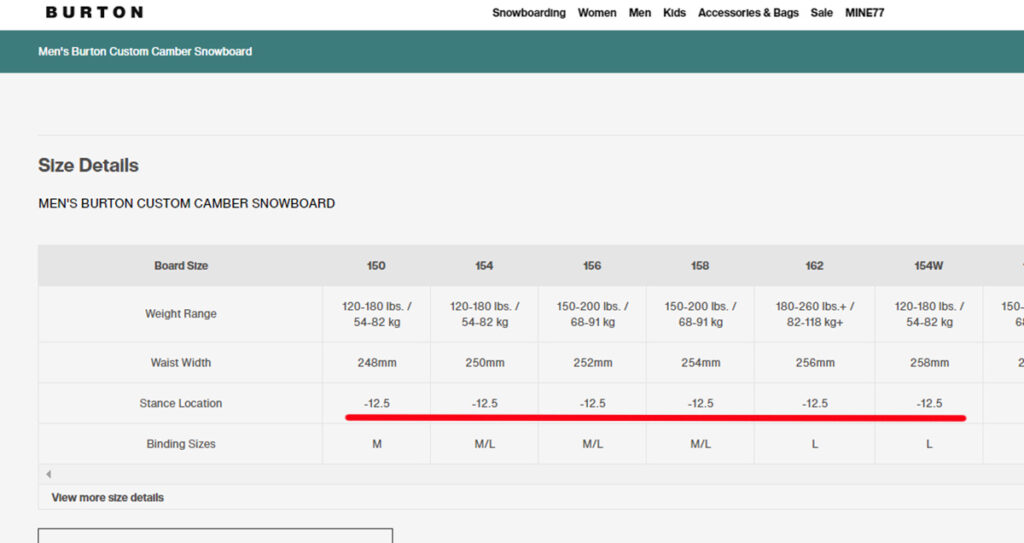
A lot will depend on the rider… for example , a deep powder day with alpine students, it might be better to have them set back more than 2 cm, maybe more like 1.5-2 inches .. so 3.5-5cms.
I have my boards set back one set of holes from the center normally.
Around 0.75-1.5 inches is normal for set back which is 1.8-3.7cms”.
Here is Sig’s pow riding below. Use it to imagine your powder riding.
Long snowboards also help with floating
If you’re renting a snowboard, it’s a good idea to ask for a longer or wider board that will have more surface area. This helps you float more, making them ideal for powder days.
Tip 2: Take a spare lens for your goggles!
Depending on the weather, some people bring spare lenses for their goggles, but spare lenses are also useful on powder days.
If you are snowboarding powder, you may fall, or you may hike up and sweat and fog up your lenses. Having a spare lens can come in handy in such situations.
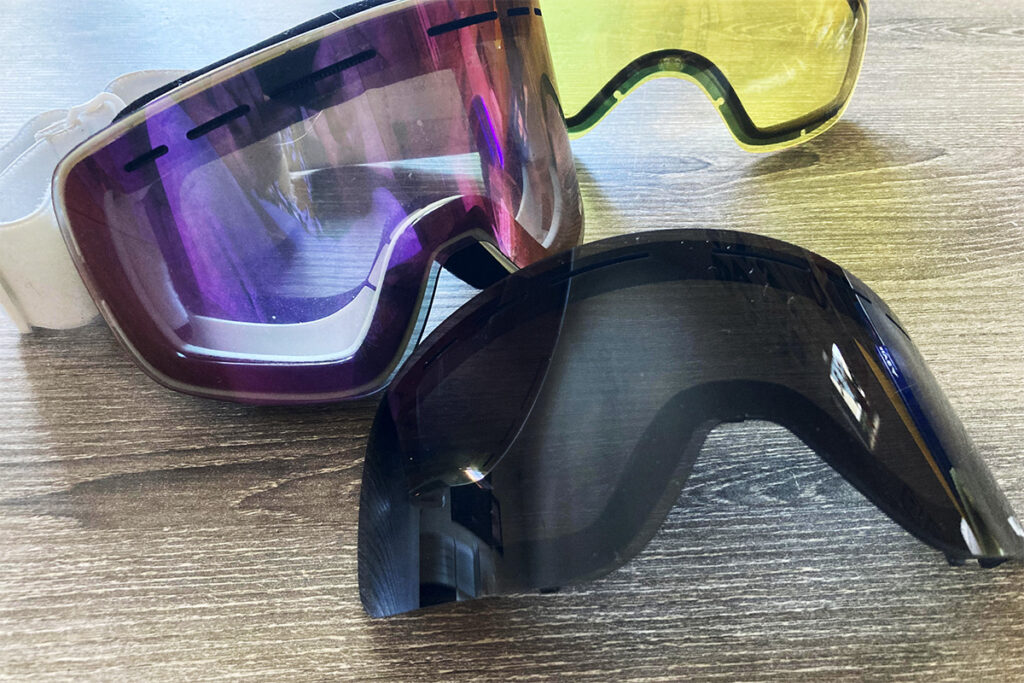
Tip 3: Put your weight on your back leg
When riding the powder, you need to put your weight on your back leg.
How much?
It depends on speed, slope and snow condition.
If the speed is fast, you don’t have to ride on your back leg so much.
On the other hand, on gentle slopes where your speed is likely to slow down, you need to ride more on your back leg.
Also, the lighter the snow quality, the less you need to ride on your back leg, but if it’s heavy fresh snow, you will need to put more pressure on your back leg.

There are roughly three types of weight ratios that you put on your front and back leg.
45 : 55
It’s almost like normal riding.
45 : 55 is when your speed is fast or when the slope is steep.
This is also the case with uneven off-piste slopes, which is common during a fresh snow day.
40 : 60
This is what you should feel while riding in the fresh snow; the slopes are intermediate and advanced.
30 : 70
When riding powder, there is more friction so you will end up going slower.
Even when riding on intermediate slopes, there are often times when you’ll get stuck.
In such a case, try to put your weight on your back leg.
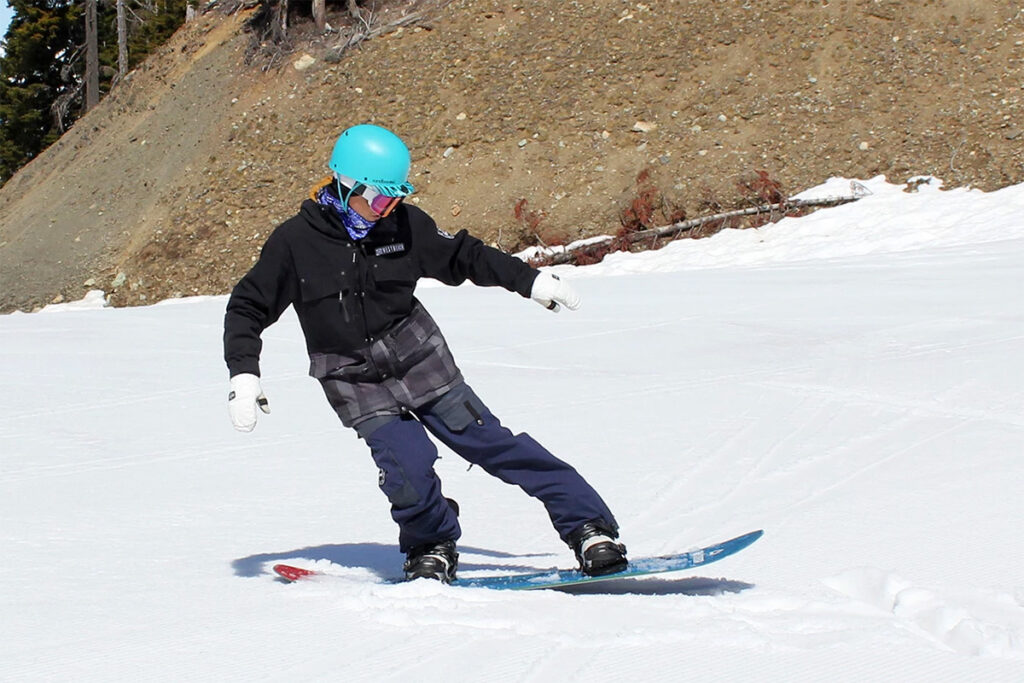
In preparation for riding with powder, practice the movement of riding on your back leg on a flat surface first.
Tips 4: Use back leg instead of front!
When you are riding in normal conditions, the front leg will act as a steering guide when making turns. When you are riding on pow, use more of your back leg instead of the front leg. Steer with your back ankle, kind of like pushing on the accelerator in a car.
When you go to the toe side turn, bend your back knee and ankle firmly. The point is to make it feel like you’re pressing the back shin against the snow surface.
When you go onto the heel side, the main idea is to lift your toes towards your chest.
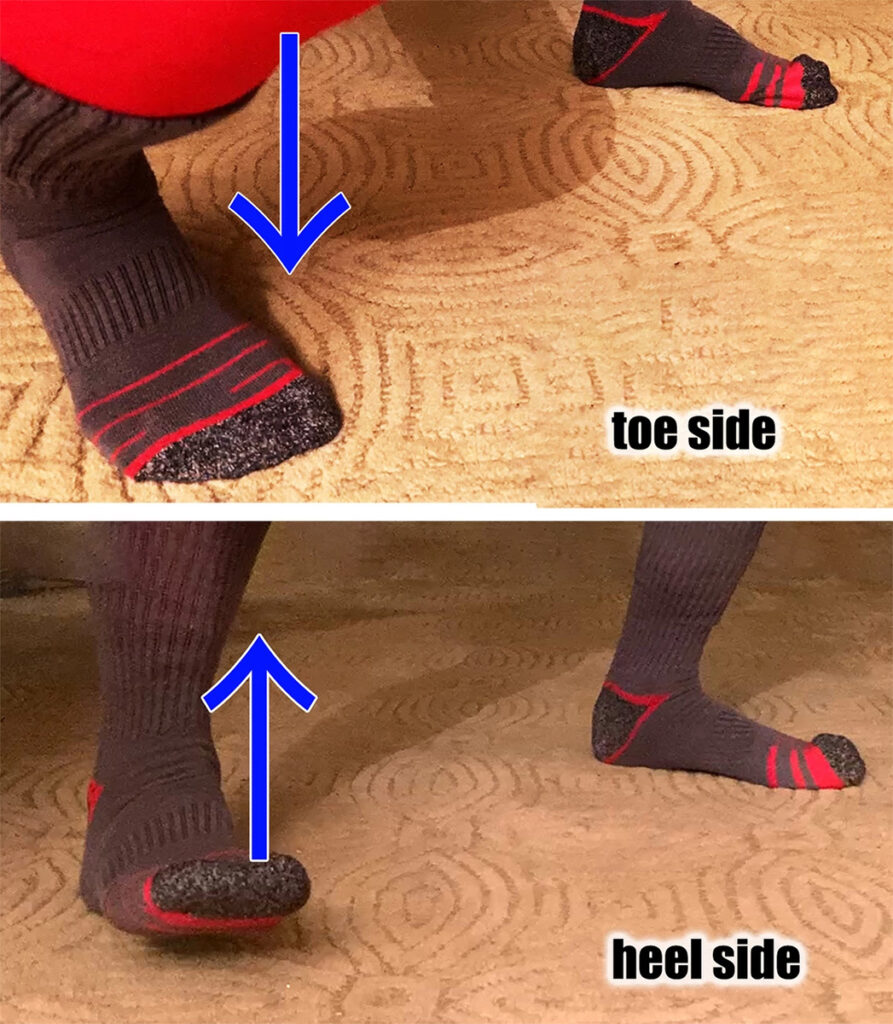
Tip 5: Ride on the base instead of using your edges
Normally, when you ride on a non-powder area you will use the edges to make turns, but in powder you should be riding with your base.
Riding with less edge angle will allow your board to better float on the powder—the more you float, the less you sink!
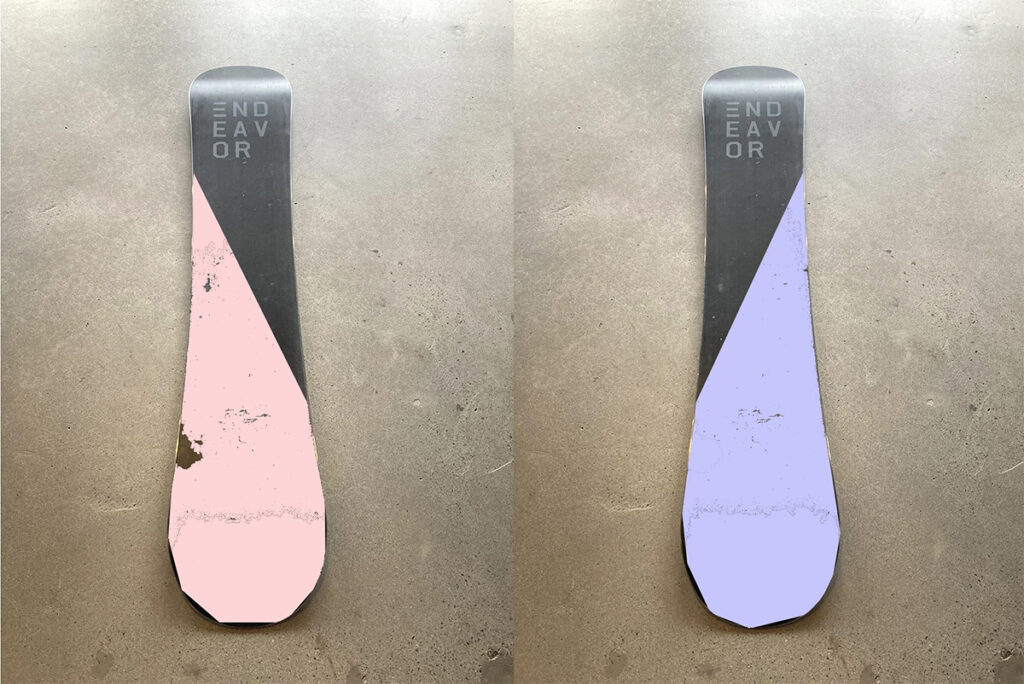
The parts painted in red and blue in the pictures above are the parts I focus on while riding in powder.
You should be applying this part of the base onto the powder, kind of like putting butter onto bread.
If you ride without this mindset, you may find that you are using your edges too much, and turning too sharply, the nose of the board is being caught in the snow, or your board will start to sink.
This is especially true for the toe side turns.
When entering your toe side turn, make a roundabout turn as if you were drawing a circle with a protractor.
Tip 6: Keep your eyes up!
People tend to look down when they are riding powder.
First, stand at the top of the slope, and then visualize the line you wish to ride down.
When you start riding, keep your eyes up! If you look down, you are a lot more likely to slow down and get stuck.
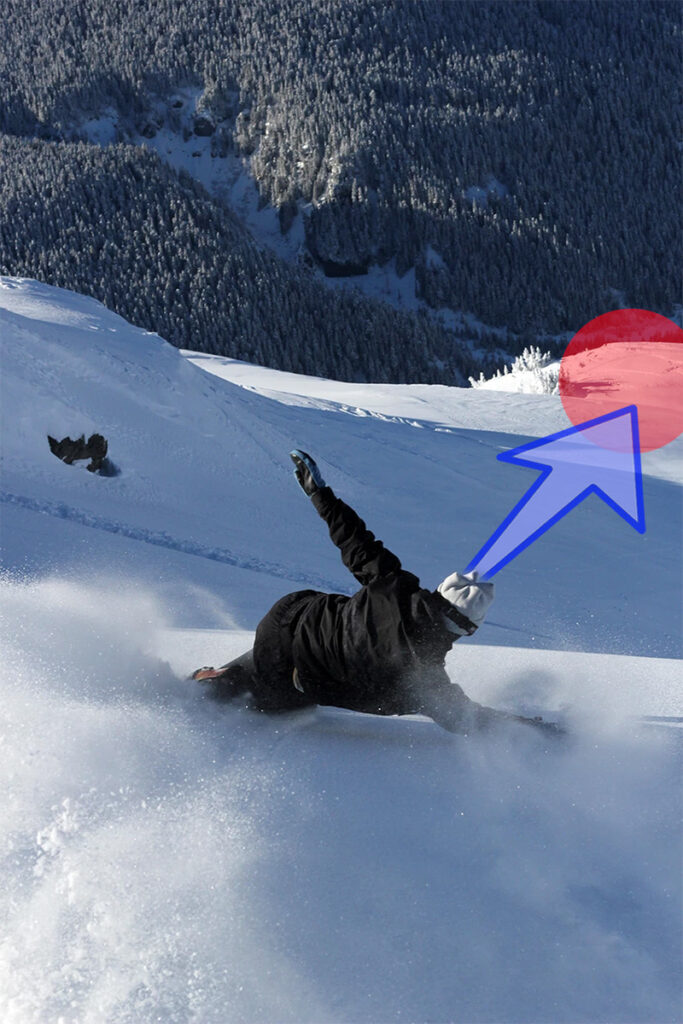
Tip 7: Keep your speed/try to go faster!
When you are riding in powder, it will be slower than usual, so don’t be afraid to try and speed up before hand! More speed will help the board float better. Riding powder is one of the best experiences for snowboarders.
It doesn’t hurt if you fall— so it is safe to send it and ride fast!
